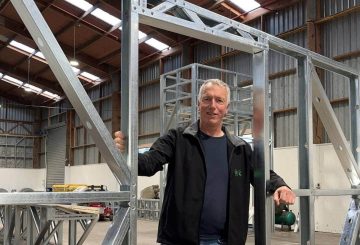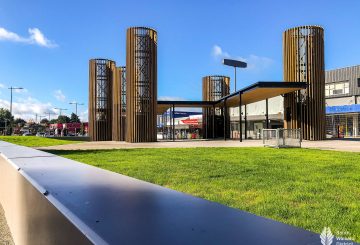关于陶波
陶波坐落在新西兰北岛的中心,陶波的中心是波光粼粼的陶波湖,这是新西兰伟大的内陆海。当你在湖边旅行时,你会发现你能想象的每一个景观。白雪皑皑的冬季滑雪场和高山沙漠。古老的森林和鸟一起活着。充满鳟鱼的河流和雷鸣般的胡卡瀑布。用恢复活力的温泉蒸地热山谷。汤加里罗国家公园令人惊叹而超凡世界的景观中有三座高耸的火山。
传说 Ngatoroirangi 负责该湖的创作。在寻找合适的地方安置他的追随者的同时,他爬到陶哈拉山顶,在他之前放了一个伟大的尘碗。
Ngatoroirangi 想促进这个贫瘠地区的增长,把一棵 totara 树从山边拔掉,然后把它扔进尘碗里。西风导致他错过了标记,树倒倒降下来。它的树枝穿过地球,淡水被水冲进来形成陶波 moana-陶波的海。据说这棵树在 Whaarewaka Point 海岸约 70 米处的水下仍然可见。
在新创建的湖畔进行感恩节活动之后,他然后从斗篷中抽出海链,然后将它们扔进水中,成为湖中的原生鱼。其中一个变成了鳗鱼,但在短距离摇走之后,它就死了。直到今天,湖里还没有鳗鱼。
该地区的原始居民(tangata Whenua)是今天留在这里的毛利部落:Ngati Tuwharetoa。该部落声称来自阿拉瓦移民独木舟的导航家和大祭司 Ngatoroirangi。阿拉瓦独木舟于公元 750 年登陆奥特阿罗/新西兰之后,Ngatoroirangi 和同一艘独木舟的亲戚蒂亚竞争成为第一个探索中部高原地区的人。
蒂亚的事件描述了他到达湖东侧的情况,他在那里注意到一个类似于他的暴雨斗篷(陶波)的悬崖形状。然后他建立了一座祭坛,并将这个地方称为 Taupo-Nui-a-tia 是蒂亚的伟大披风。这最终被缩写为陶波。
然而,Ngatoroirangi 也在黄昏抵达同一个东岸线,并在那里建立营地。他的后代还声称陶波的名字来自 Tau(定居或休息)和 po(晚上)。Ngatoroirangi 建立了他的祭坛,然后声称它比蒂亚老,所以挑战他对周围土地的所有权。蒂亚最终向他承认,向西移动到蒂蒂劳彭加山脚下的一个地区,在那里定居。
1980 年代,Mine Bay 的毛利人石雕 10 米高是由他的后代雕刻的,以表彰被认为是富有远见的毛利人导航家和部落领袖的 Ngatoroirangi。


















































